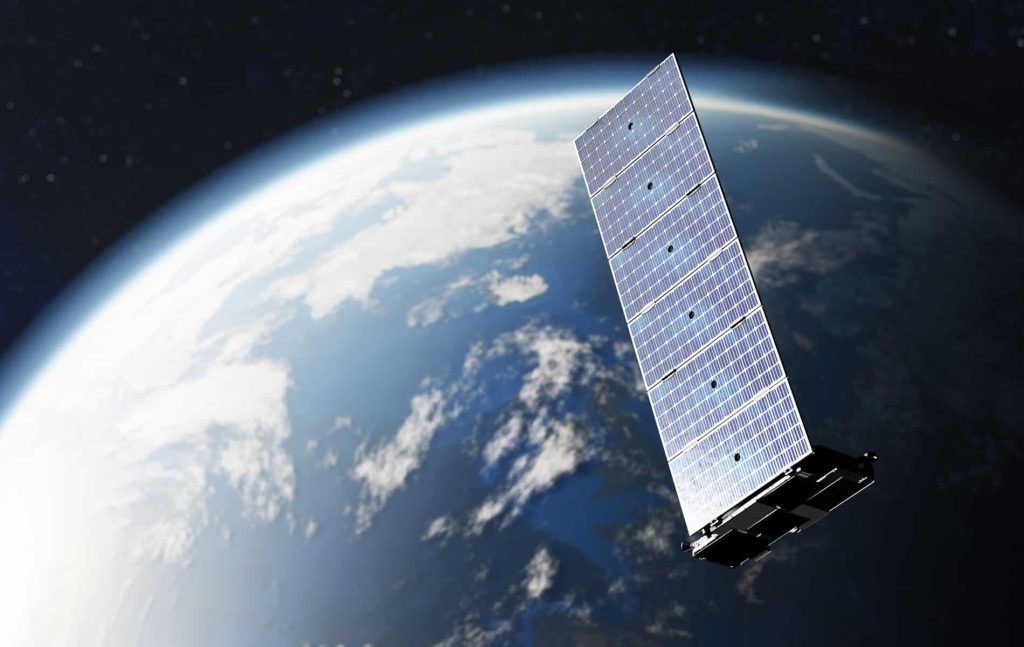After a short lifespan of five years, the satellites return to Earth and burn up in the atmosphere, causing tiny particles of aluminum oxide to significantly damage the protective ozone layer.
At the moment, the space around the Earth is already occupied. But it is expected to get busier. It is estimated that thousands of satellites will be launched in the coming years to provide Internet services. However, these satellites have a downside. It appears to seriously jeopardize the recovery of the ozone hole.
Launching thousands of satellites
There are currently about 8,100 objects in low Earth orbit. 6,000 of them are Starlink satellites, launched in recent years. And it doesn’t stop there. The increasing demand for global Internet coverage is rapidly increasing the number of Internet small satellite launches. For example, SpaceX plans to launch another 12,000 Starlink satellites. Ultimately, as many as 42,000 planets may orbit Earth. Other companies, such as Amazon, also plan to launch constellations of 3,000 to 13,000 satellites. This can have a few consequences.
Short life
The lifespan of Internet satellites is short, about five years. Therefore, companies must regularly send new copies into orbit to keep their Internet services running. But this is not entirely without consequences. When old satellites fall into the atmosphere and burn up, they leave behind tiny particles of aluminum oxide. This is bad news for the ozone layer, which protects the Earth from harmful ultraviolet rays.
More about the hole in the ozone layer
Ozone is a molecule made up of three oxygen atoms and can be found in the stratosphere: a layer of the Earth’s atmosphere at an altitude of about 40 kilometers. There, the so-called ozone layer is formed, which protects the surface of our planet from harmful ultraviolet rays and makes life on Earth possible. In the 1980s, researchers discovered that this important ozone layer had been severely damaged by certain propellants (CFCs) that were widely used in aerosol cans and refrigerators, among other things. When CFCs end up in the ozone layer, they decompose under the influence of ultraviolet radiation, creating chlorine radicals which in turn break down ozone molecules. In particular over Antarctica, the concentration of ozone decreased to such an extent that there was also talk of a “hole in the ozone layer.” This “hole” – which is not a real hole, but an area where the ozone concentration is much lower than normal – is created at the end of winter, when the Sun shines on this part of the stratosphere again and refracts. Fuel so that substances destroying the ozone layer are created. In response to the discovery of this “hole in the ozone layer,” the Montreal Protocol was established, in which countries around the world pledged to reduce the production of ozone-destroying substances.
Aluminum oxides cause chemical reactions that lead to the depletion of the stratospheric ozone layer. These oxides do not interact directly with ozone molecules, but they catalyze destructive reactions between ozone and chlorine, leading to the destruction of the ozone layer. Because aluminum oxides are not used, they can continue to destroy ozone molecules for decades as they spread through the stratosphere. Recent research showed that the amount of these oxides increased eight times between 2016 and 2022. The amount is expected to continue to rise due to the rapid increase in the number of satellites in orbit around the Earth.
Ozone Layer
The results were published in the journal Geophysical Research LettersVery annoying. Because thanks to the 1987 Montreal Protocol, the hole in the ozone layer appears to be recovering. With their signature, governments promised to phase out the production of substances that deplete the ozone layer – such as CFCs. The effects of this are now slowly but surely becoming visible. The ozone hole is now much smaller, and is expected to be fully restored within fifty years. But an unexpected increase in aluminum oxides may now hamper the work.
Preparation
Until now, little attention has been paid to pollution resulting from satellite crashes and burn-ups in the upper atmosphere. But the new study now highlights just how urgent this problem is. According to researchers’ calculations, if a small satellite weighing 250 kilograms perishes, 30 kilograms of aluminum oxides will be produced. Most of these particles are generated in the mesosphere, 50 to 85 kilometers above the Earth’s surface. In 2022, 17 metric tons of alumina nanoparticles were released into the atmosphere by falling satellites. According to the researchers, an estimated 360 metric tons of alumina will be released annually when all planned satellite constellations are operational. This is an increase of 646 percent (!) compared to normal levels in the atmosphere.
This means that Internet satellites could seriously hinder the recovery of the weakening ozone layer. “It’s only in recent years that people have begun to realize that this could become a problem,” says researcher Joseph Wang. “We are one of the first teams to consider the implications of these facts.” In the current situation, the consequences seem significant. The ball is now back in SpaceX’s court and other companies planning to launch internet satellites to see what they can do to prevent further damage to the ozone layer.

“Coffee buff. Twitter fanatic. Tv practitioner. Social media advocate. Pop culture ninja.”











More Stories
Which can cause an increase in nitrogen.
The Central State Real Estate Agency has no additional space to accommodate Ukrainians.
The oystercatcher, the “unlucky national bird,” is increasingly breeding on rooftops.